SPECIAL REPORTS AND PROJECTS
How the pandemic impacted rainforests in 2020: a year in review
Published
5 years agoon
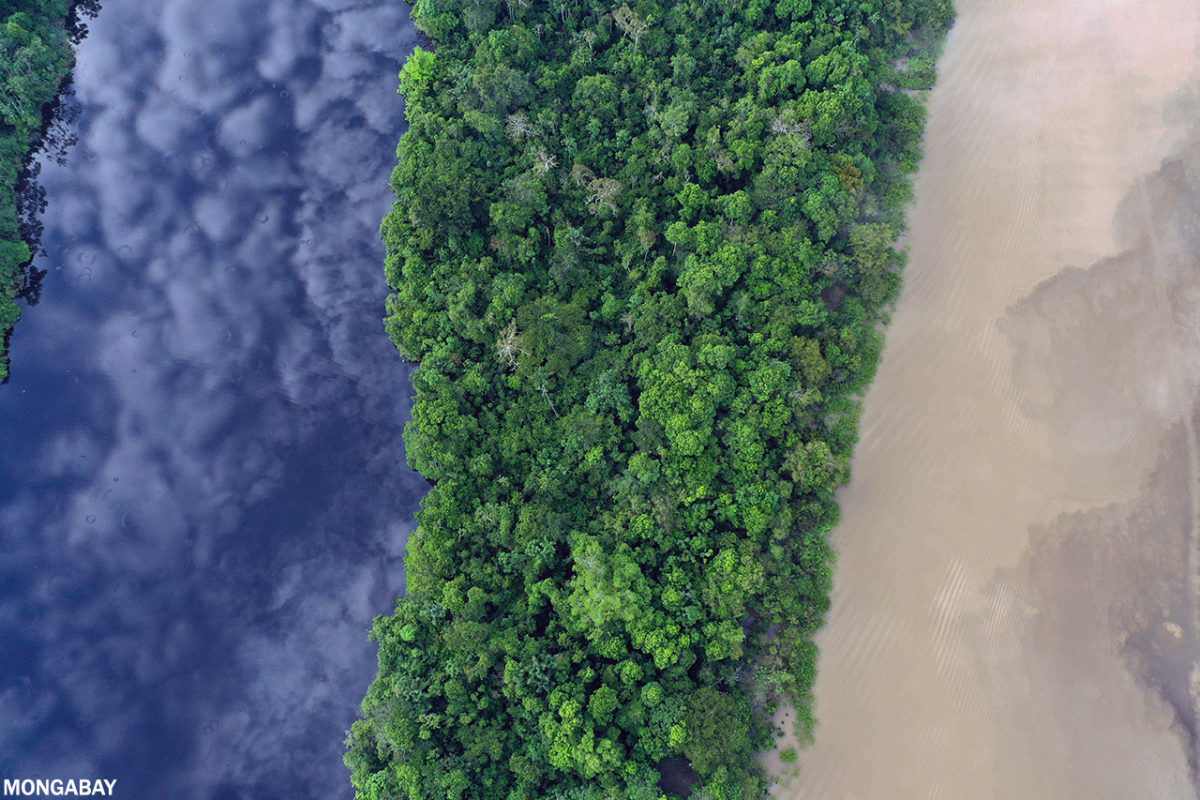
- 2020 was supposed to be a make-or-break year for tropical forests. It was the year when global leaders were scheduled to come together to assess the past decade’s progress and set the climate and biodiversity agendas for the next decade. These included emissions reductions targets, government procurement policies and corporate zero-deforestation commitments, and goals to set aside protected areas and restore degraded lands.
- COVID-19 upended everything: Nowhere — not even tropical rainforests — escaped the effects of the global pandemic. Conservation was particularly hard in tropical countries.
- 2019’s worst trends for forests mostly continued through the pandemic including widespread forest fires, rising commodity prices, increasing repression and violence against environmental defenders, and new laws and policies in Brazil and Indonesia that undermine forest conservation.
- We don’t yet have numbers on the degree to which the pandemic affected deforestation, because it generally takes several months to process that data. That being said, there are reasons to suspect that 2020’s forest loss will again be substantial.
Previous rainforest year-in-reviews:
The 2010s | 2019 | 2018 | 2017 | 2016 | 2015 | 2014 | 2013 | 2012 | 2011 | 2009
Like virtually everything in 2020, COVID-19 defined the year for tropical rainforests.
2020 was supposed to be a make-or-break year for tropical forests. It was the year when global leaders were scheduled to come together to assess the past decade’s progress and set the climate and biodiversity agendas for the next decade. These included emissions reductions targets, government procurement policies and corporate zero-deforestation commitments, and goals to set aside protected areas and restore degraded lands. These meetings were to be set against a backdrop of a “lost decade” for tropical forests, where progress on arresting deforestation fell short of ambitions, violence against environmental defenders surged, the effects of deforestation and climate change on forests became more apparent, and outright hostility toward tropical forest conservation grew in some of the world’s largest countries. Yet there were reasons for cautious optimism for tropical forest conservation coming out of the 2010s. The impacts of climate change were becoming so apparent that they were finally starting to provoke a response from the public and private sector; recognition of the role Indigenous peoples play in stewarding forests was rising; technological advances were improving forest monitoring to the extent that ignorance was no longer an excuse for inaction; and interest in forest restoration was reaching new heights.

COVID-19 upended everything: Nowhere escaped the effects of the global pandemic. As COVID spread around the world between February and April, many governments responded with lockdowns, which brought travel, commerce, and industrial production to a halt. Stock markets plunged, the skies above some of the world’s most polluted cities cleared, and carbon emissions fell at a rate unprecedented since World War II. Governments in some countries pumped money into their financial systems, buoying stock markets and kick-starting a euphoric surge in asset values. The price of many commodities that are major drivers of tropical deforestation rebounded sharply. As the lockdowns yielded to pressure to reopen economies and societies, some governments put forth bailouts, economic stimulus packages, and other incentives for forest-destroying industries. Millions of people left cities for the countryside, reversing a long-term trend of migration to urban areas.
Conservation was particularly hard hit in tropical countries. Many NGOs pulled out of field projects, conservation livelihood models dependent on ecotourism and research evaporated, and governments in countries like Brazil and Indonesia relaxed environmental regulations and law enforcement, unleashing a spasm of illegal logging, mining, land invasions, and forest clearing. Deforestation in Brazil, which was already trending upward before COVID, hit the highest level since 2008.
2019’s worst trends for forests mostly continued through the pandemic. Fires in Australia that began in mid-2019 burned into March, while drier-than-normal conditions in the Amazon enabled another active fire season. Governments used COVID as an excuse to crush dissent and critical voices, or were too distracted by the crisis to address rising violence against environmental and human rights defenders, more than 300 of whom were killed in Colombia alone. Social media platforms like Facebook continued to be weaponized against environmental journalists and campaigners.

But as the losses mounted and the world descended into darkness, there were green shoots of hope for environmentalists. Lockdowns provided a tantalizing glimpse into a world with a diminished human footprint and the potential for humanity to come together around a common threat — the kind of unified action needed to address climate change, for example. Skies and rivers cleared, traffic disappeared, and wildlife reclaimed haunts long ago ceded to cars and people. Observers looking for a silver lining hoped that the pandemic would force humanity to reevaluate its relationship with nature, potentially driving a shift toward a more sustainable, resilient, and equitable economic system. Interest in renewable energy, regenerative agriculture, and the circular economy blossomed. A protest movement emanating from repeated extrajudicial killings of Black and Indigenous peoples in the United States and abroad resonated from Milwaukee to Merauke, spurring calls for change and pushing many conservation organizations, especially in Europe and the U.S., to take a hard look at issues of equity, justice, and inclusiveness.
The U.S. presidential election in November raised hopes that the world’s biggest economic power would reassert a leadership role on global affairs, including rejoining the Paris climate agreement. The rapid development of COVID-19 vaccines raised the prospect of the world returning to “normal” far faster than was envisioned at the start of the pandemic. But no one knows what would a return to normalcy would mean for the world’s rainforests.
The big picture
According to satellite data, deforestation of tropical primary forests has been trending upward since 2000, with the average loss in the 2010s nearly 30% higher than the 2000s, despite global efforts to curb deforestation. The second half of the 2010s had the highest rate of loss during the period, registering about 50% higher than 2010-2014. The three years with the highest extent of primary tropical forest loss in the past 20 years occurred in 2016, 2017, and 2019.

We don’t yet have numbers on the degree to which the pandemic affected deforestation, because it generally takes several months to process that data. A couple of studies attempted to quantify loss in the first few months of the pandemic using unconfirmed alert data from the University of Maryland and Global Forest Watch. But because the data are unconfirmed, the analyses cannot be used to compare loss to prior years, limiting their utility. We should expect updated data to be released in the first quarter of 2021.
That being said, there are reasons to suspect that 2020’s forest loss will again be substantial, not the least of which is because deforestation in the Brazilian Amazon — which accounts for more than 60% of Earth’s largest rainforest — has been pacing ahead of last year. The pandemic has resulted in several conditions that would be expected to favor a rise in deforestation. Prices for most major commodities that drive deforestation, including palm oil, soy, and timber, have increased since the start of the year. The exceptions are beef and fossil fuels, but fossil fuel extraction itself is not a major direct driver of deforestation; instead, it tends to be the roads and infrastructure associated with energy development that drive deforestation. The sharp rise in the price of minerals and agricultural commodities will incentivize infrastructure expansion, despite the decline in energy prices. Additionally, government stimulus in tropical countries, where it exists, has been oriented toward infrastructure and supporting existing industries. Stimulus may include direct financial transfers as well as policy interventions, like reducing environmental regulations and making it easier to secure new concessions. Government priorities have also shifted to health and social programs, diverting resources from environmental law enforcement. Another impact of COVID-19 has been to reverse the long-term rural-to-urban migration. This trend, which may not be sustained long after the pandemic, would be expected to increase pressure on forests for small-scale agriculture.

In ‘the Before Times’
While the pandemic set the tone for 2020 from March onward, there were some significant developments for tropical forests during first few months of the year.
2020 opened with bushfires continuing to rage across eastern Australia after breaking out in September 2019. By the time Australia’s “Black Summer” was over in March, about 18.6 million hectares (46 million acres) of land had burned, including 80% of the Blue Mountains near Sydney and 50% of Gondwana World Heritage rainforests in New South Wales and Queensland.
At the World Economic Forum in Davos in January, U.S. President Donald Trump jumped on the tree-planting bandwagon that gained traction in 2019, announcing that the U.S. would join the “One Trillion Trees Initiative,” an effort to combat climate change by planting trees. He followed that up by mentioning tree planting during his State of the Union address in January. Critics noted, however, that the Trump administration’s policies throughout his presidency have been strongly at odds with efforts to protect and restore forests.
In February, Pope Francis released “Querida Amazonia,” an apostolic exhortation calling for the protection of the Amazon rainforest and improving the quality of life for people in the region, among other points. The document won plaudits from some environmentalists and Indigenous rights advocates, but drew the ire of Brazilian President Jair Bolsonaro.
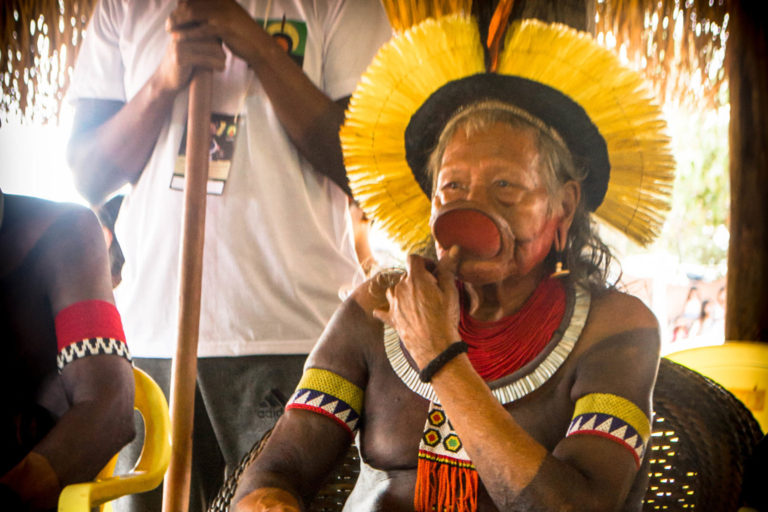
Concerns over Bolsonaro’s policies and heated rhetoric against Indigenous peoples brought together more than 600 leaders from 47 Amazonian tribes in February. The meeting, called by 89-year-old Kayapó Chief Raoni Metuktire, produced the Piaraçu Manifesto, which denounced the Brazilian government’s efforts to open the Amazon to more mining, logging, and industrial agriculture, and promote more roads, dams, and other large-scale infrastructure in the region.
The impact of coronavirus on rainforests
Coronavirus spread to the extent that by mid-March many governments around the world were issuing shelter-in-place orders, which peaked on April 7. Lockdowns triggered a global freeze on travel, collapsing conservation business models based on ecotourism or visits from researchers, and prompting international NGOs to retreat from many field sites. Law enforcement evaporated in some places, resulting in an increase in illegal activities, including logging, poaching, invasions of Indigenous lands and protected areas, and forest clearing, according to some accounts. Panic buying of gold triggered a surge in the price of the precious metal, ushering in gold rushes in tropical forests around the world, especially in the Amazon.

Some governments responded to the economic crisis resulting from the pandemic by plowing stimulus money into industries that drive deforestation and forest degradation while also relaxing enforcement of environmental laws. For example, Indonesia passed sweeping deregulation legislation that benefited palm oil, timber, and mining companies, while in some places, companies that were suspected to have engaged in illegal forest activities secured stimulus money.
The pandemic derailed the high-level meetings on climate and biodiversity. But while the meetings were canceled or postponed, civil society and some governments were undeterred, proceeding with the release of publications and reports on the need to take urgent action to address climate change and the extinction crisis.
If there was any silver lining to be found in the carnage caused by the pandemic, it was that COVID forced the public to reckon with the fact that many zoonotic diseases emerge from human-livestock-wildlife interactions, which are often exacerbated by environmental degradation, industrialized farming, and the wildlife trade. A report from the Intergovernmental Science-Policy Platform on Biodiversity and Ecosystem Services (IPBES) evaluated humanity’s role in creating conditions that enable pandemics and warned that COVID-19 may just be a preview of what’s to come if our behavior doesn’t change. Some scientists cautioned that the next pandemic could emerge from the Amazon due to the extent of ecosystem disturbance and the scale of livestock production in the region. Conservationists urged governments to put conservation at the center of COVID-19 recovery efforts.
Open season on environmental defenders
COVID-19 enabled and emboldened crackdowns on environmental defenders, which were already worsening going into 2020. In July, Global Witness announced that 2019 was the deadliest year ever for environmental activists, with 212 deaths recorded. 2020 appears to have far surpassed that record, with 300 killings of environmentalist and human rights advocates reported in Colombia alone through mid-December. High-profile murders ranged from monarch butterfly defender Homero Gómez González in Mexico in February to a massacre of 12 wildlife rangers in DRC’s Virunga National Park in April.
Read more: Notable deaths in conservation in 2020
A difficult year for Indigenous communities in the Amazon and beyond
Beyond the apparent uptick in violence, Indigenous communities around the world struggled to deal with the impact of COVID-19. Early in the pandemic, there were cases of Indigenous peoples in the Amazon being stranded in cities like Iquitos and Manaus due to lockdowns. Deprived of the ability to return to their villages and without access to quality health care, many died alone, far from home. With the death of Indigenous elders from COVID, communities lamented the irreplaceable loss of traditional knowledge. Some Indigenous groups closed off access to their lands in an effort to protect themselves from infection. Isolated communities are particularly vulnerable to diseases like COVID-19.
On the other end of the spectrum, evangelical missionaries from Ethnos360, formerly known as the New Tribes Mission, and Frontier International responded to the pandemic by allegedly attempting to establish contact with isolated Indigenous groups in the Javari Indigenous Reserve in March. Such activity is prohibited by Brazil’s constitution. The Bolsonaro administration attempted to appoint Ethnos360 missionary Ricardo Lopes Dias to lead the department of isolated and recently contacted Indigenous tribes under Brazil’s federal Indigenous affairs agency, Funai.
Lack of law enforcement in Brazil reportedly emboldened speculators to invade Indigenous lands, including territories demarcated for the Karipuna, Guajajara, Aptereua, Ituna Itatá, and Apyterewa tribes, among others. A report from the Socioenvironmental Institute (ISA), a Brazilian NGO, said the Brazilian government was failing to protect the Yanomami from invasions by illegal gold miners.
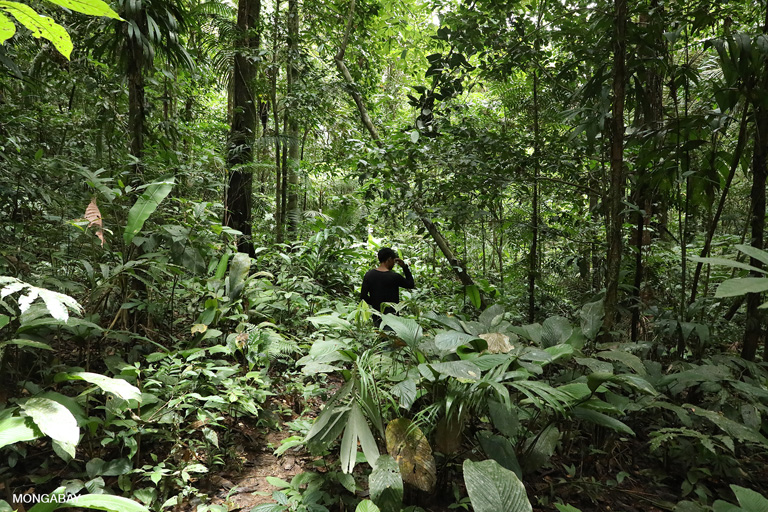
Indigenous communities continued to report troubles getting their land officially demarcated. In April, Brazil’s Funai opened 98,000 square kilometers (38,000 square miles) of as-yet-unrecognized Indigenous areas to outsider land claims made within Indigenous territories that are still going through the demarcation process. Funai’s move was immediately countered in court, but an investigation by the news outlet Agência Pública found that 114 properties spanning more than 250,000 hectares (618,000 acres) have been certified inside Indigenous territories awaiting demarcation in the Brazilian Amazon. Some of the properties were authorized before Funai had finished its required review process. For example, the Indigenous Munduruku communities in Pará complained of forest clearing for industrial soy on their traditional land.
It wasn’t all setbacks for Indigenous peoples in Brazil in 2020. In March, a federal judge ordered government websites to publish a letter from the Kinja Indigenous people for 30 days as part of their right of response to a series of racist and incendiary remarks from the Bolsonaro administration. In April, a group of Ashaninka received an official apology and about $3 million for logging of their lands in the 1980s by the family of the current governor of Acre state. The settlement came after a 14-year legal battle that reached the federal Supreme Court in 2011. In July, a federal judge ordered the Brazilian government to remove 20,000 gold miners who had illegal invaded the Yanomami reserve.

Rieli Franciscato, a field expert with Funai, was killed in September on the edge of the Uru-Eu-Wau-Wau Indigenous Territory in Rondônia state. Franciscato, 56, worked to protect the rights and territory of Indigenous peoples living in voluntary isolation in the Amazon rainforest. He was thought to have been killed by a band of “uncontacted” Wau-Wau who, due to previous violent encounters with outsiders invading their lands, wouldn’t have known that he was working on their behalf.
Indigenous peoples’ advocates warned that the Piripkura Indigenous Territory may not survive beyond 2021 as the tribe’s population dwindles. Indigenous peoples themselves said COVID-19 represented an existential threat to some communities.
The Arns Commission, a human rights body, sent a petition to the International Criminal Court demanding an investigation into the Bolsonaro administration’s attacks on Indigenous rights, arguing that its policies could constitute “genocide” if they wipe out isolated tribes.
Indigenous peoples and conservation
Recognition of the role Indigenous peoples and local peoples play in stewarding forests has been growing in conservation circles over the past decade, leading NGOs, U.N. bodies, and other actors to become stronger advocates for Indigenous rights.
In 2020, several studies further bolstered the idea that empowering Indigenous peoples is an effective approach to combating climate change and achieving biodiversity conservation goals. A paper published in Frontiers in Ecology and the Environment in January found that Indigenous lands hold 36% or more of remaining intact forest landscapes; while a Proceedings of the National Academy of Sciences study published the same month concluded that 90% of the Amazon rainforest’s carbon emissions between 2003 and 2016 came from outside Indigenous territories and protected areas. Another PNAS study, published in August, demonstrated the importance of secure land tenure, finding that forest cover was more effectively maintained in Indigenous territories that were officially demarcated. A study by the Center for International Forestry Research (CIFOR) found a similar result when evaluating community forest enterprises in Mexico, Guatemala, Nepal and Namibia.

In November, the Rights and Resources Initiative published a paper arguing that it won’t be possible to stave off the collapse of biodiversity without respecting the tenure and human rights of Indigenous peoples, local communities, and Afro-descendants.
Time magazine named Waorani leader Nemonte Nenquimo one of its 100 most influential people of 2020 for her efforts to defend her people’s territory in the Ecuadoran Amazon.
Community forest enterprises in Mexico were hard hit by the pandemic.
Recognizing social and racial injustice
Protests over police brutality in the U.S. spread well beyond its borders, forcing a reckoning on systemic racism, social injustice, and colonial legacy in a wide range of sectors, including conservation organizations, environmental NGOs and academic institutions. The #BlackLivesMatter movement in the U.S. resonated with communities from the Amazon to Indonesian Papua, sparking solidarity movements and actions.
In November, WWF released the results of a review conducted by an independent panel into long-running allegations that the conservation giant failed to address human rights abuses by rangers in Central Africa and South Asia. The report revealed that WWF knew of the allegations but “decided not to publish commissioned reports, to downplay information received, or to overstate the effectiveness of its proposed responses.”
Destabilization of the Amazon
The pandemic did not provide a reprieve for Earth’s largest rainforest, where deforestation continued its upward trend through 2020. In November, the Brazilian government announced that deforestation for the 2019/2020 year topped 11,000 square kilometers (4,200 square miles), reaching a 12-year high. There were indications that deforestation was also rising in Peru, Venezuela, and Bolivia.
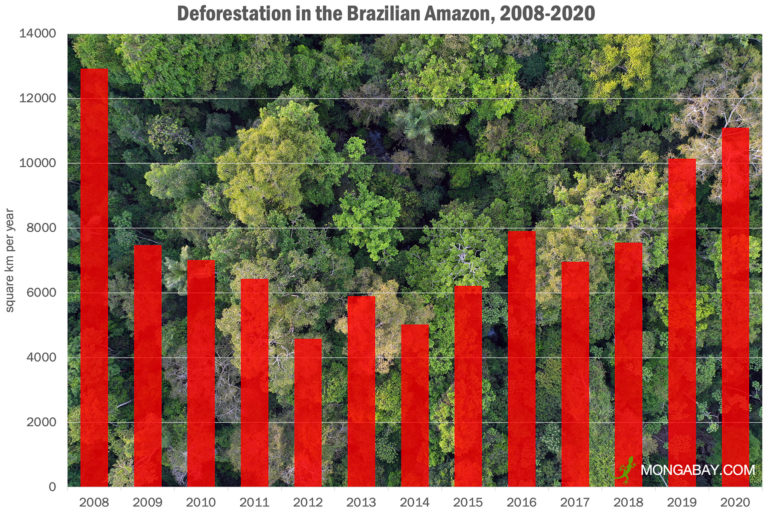
There were plenty of signs that the increase in deforestation in Brazil was not an aberration or a trend that was likely to reverse in the near term. The Bolsonaro administration pushed new infrastructure projects that could lock in pressure on forests for decades, like the Ferrovia Paraense (FEPASA) railway, Amazon river ports to facilitate increased trade with China, the reconstruction of the BR-319 highway, which would open up the largest block of the Brazilian Amazon to deforestation; the Trans-Purus road, which would cut through heavily forested areas including the Apurinã do Igarapé São João Indigenous Territory; and extending the BR-13 highway 1,000 kilometers (600 miles) to Suriname through the Trombetas State Forest. The Bolsonaro administration also took steps to open large areas to extractive industries, including oil and gas extraction and mining. A study by the World Resources Institute (WRI) and the Amazon Geo-Referenced Socio-Environmental Information Network (RAISG) found that more than a fifth of Indigenous territory in the Amazon is already affected by mining. Mining companies, including Vale, continue to bid to mine on more Indigenous lands.
With cabinet ministers suggesting the administration use the pandemic as a way to distract public attention from sweeping deregulation efforts, Bolsonaro dismantled environmental regulations, relaxed enforcement of environmental laws, moved to hand over deforestation and fire monitoring from civilian agencies to the military, and continued to replace civil servants and scientists in government positions with cronies, who in some cases had a history of working against the agencies they would be managing. Bolsonaro also continued to use heated rhetoric against critics of his environmental policy, even appearing to threaten the use of force against the United States if the incoming administration of president-elect Joe Biden tried to impose sanctions for ongoing deforestation. Bolsonaro proved hesitant to address violence against environmental defenders that followed in the wake of his heated rhetoric against activists, contributing to a sense of impunity among land invaders and illegal loggers.
Bolsonaro’s efforts often faced headwinds from independent public prosecutors, state-level governments, and the courts. For example, several lawsuits were filed to reverse the administration’s actions to ease exports of illegally logged timber and restart the suspended Amazon Fund, while a judge blocked the appointment of a controversial missionary to head Funai’s department for isolated and recently contacted Indigenous tribes. Public outcry generated from press reporting on controversial decisions was also at times an obstacle for the administration. Officials from prior administrations also put up resistance: 17 former Brazilian finance ministers and central bank presidents in July signed a letter criticizing Bolsonaro’s policies in the Amazon.
After worldwide condemnation of the Bolsonaro administration’s handling of fires in 2019, which tarnished the reputation of Brazilian business and produced threats of international sanctions against Brazilian exports, there was hope among environmentalists this year’s fire season would be better managed. But that didn’t prove to be the case, with hundreds of fires burning through forests, including protected areas, Indigenous territories, and areas set aside for “uncontacted” tribes. Progressively drier conditions across vast swaths of the Amazon means that the use of small-scale fires for slash-and-burn agriculture now risks igniting forest fires.
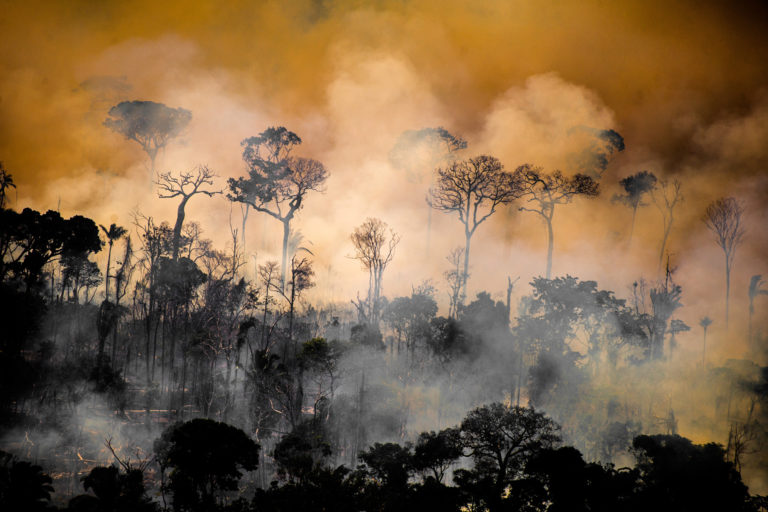
Again under pressure from the international community, investors, and some Brazilian companies for failing to curtail the burning, Bolsonaro decreed a 120-day Amazon fire ban early in the dry season and called in the military to help combat the burning. While the fire ban criminalized burning, by the end of November, 2,250 major fires had been detected by the Amazon Conservation Association’s MAAP Initiative. Forty percent of these were classified as forest fires, burning more than 2 million hectares (5 million acres) of forest. Twelve percent of the fires occurred within Indigenous territories and protected areas.
The rise in deforestation in the Brazilian Amazon meant Brazil would miss its 2020 goals under the Paris climate agreement. Greenhouse gas emissions rose 9.6% in 2019, the first year of Bolsonaro’s presidency.
Scientists have been warning for more than 20 years that the combination of deforestation, forest degradation, and climate change could trigger a rapid shift of large swaths of the Amazon from rainforest to dry woodland akin to the neighboring Cerrado savanna. While various thresholds and time frames have been proposed for when the tipping point would occur, there were growing signs that a transition may already be underway. The evidence includes diminished moisture in parts of the Amazon, rising temperatures, increased die-off of trees, and the appearance of dry-forest species in rainforests in the southern Amazon. Several studies and reports warned of the potential impact of such a transition, including drying in other parts of Brazil with knock-on effects for agriculture and energy production, and the Amazon shifting from a net carbon sink to a carbon source. And what’s happening in the Amazon seems to also be occurring in other tropical forests, from Borneo to the Congo.
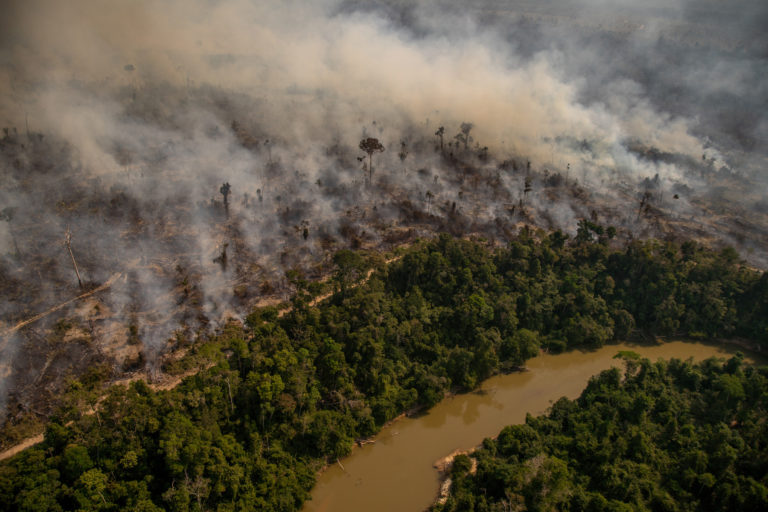
Against the backdrop of fires, rising forest loss, and increasingly dire warnings from scientists about the fate of the Amazon, journalists and NGOs continued to investigate and expose the actors driving deforestation in the region. The cattle, soy, and timber sectors were also subject to numerous reports and articles, which showed their culpability in driving the Amazon’s destruction as well as alleged illegal activity in some cases. The focus also widened in 2020 to look more at the banks, asset managers, and financial institutions that provide the funding to enable deforestation. A study published in the journal Science found that only about 2% of producers are responsible for the majority of illegal deforestation in the Amazon rainforest and Cerrado savanna.
Indonesia
2020 may come to be seen as a pivotal year for Indonesia’s forests. Deforestation in Indonesia has slowed since 2016, but the Indonesian government pressed forward on policies and projects that could become major drivers of deforestation for decades to come.
The year started off on a hopeful front from a forest conservation standpoint, building off a December 2019 decision by Indonesia’s Supreme Court to strike down a legal provision that effectively allowed plantation companies to operate illegally inside protected forests; the Indonesian government filing suit against plantation companies linked to peat fires in 2019; and President Joko Widodo, or “Jokowi,” calling for stronger action to address fires. In February, a state administrative court ruled that Indonesia’s agrarian ministry had to release detailed maps of oil palm plantations, including information about ownership, for concessions in the provinces of West Papua and Papua, which are viewed as the last frontier for large-scale deforestation in Indonesia. Such data is typically shielded from public view. Shortly thereafter, Luhut Pandjaitan, the coordinating minister for maritime affairs and investment, declared there would be no new permits approved for oil palm plantations in the region. That was followed by South Korea’s POSCO, which has been linked to large-scale deforestation in Papua for oil palm between 2012 and 2018, committing to a “no deforestation, no peatland, no exploitation” (NDPE) policy for its Papua operations.

At the same time as these developments however, there was a darker undercurrent in Indonesia: the creeping authoritarianism of the state, including rising militarization, weakening of oversight bodies like the anticorruption agency, crackdown on dissent, and targeting of civil society organizations and journalists. On this latter front, 2020 opened with Indonesia’s environment ministry terminating its forest conservation partnership with WWF (it later allowed WWF to continue working with endangered rhinos); Mongabay editor Phil Jacobson being detained in Central Kalimantan province; and environmental defenders in North Sumatra fearing for their lives for their efforts to protect the habitat of the Tapanuli orangutan from a hydropower project. The situation would worsen with the arrival of COVID-19.
Officially recorded COVID-19 cases in Indonesia grew gradually, but the government moved quickly on a sweeping deregulation bill that fast-tracked infrastructure and industrial agricultural projects. The “omnibus bill,” officially called the Job Creation Act, was contentious out of the gates, both due to conflict of interests — lawmakers who drafted the legislation had direct links to the companies that stood to benefit most from it — and the accelerated process by which it was deliberated and passed into law. Mining and plantation companies in particular gained from the weakening of environmental regulations, which environmentalists said would lead to increased deforestation and incidence of fire. The government arrested more than 6,000 people who protested the new law.
In parallel with the omnibus bill, the Indonesian government launched a push to expand a national “food estate” program by establishing millions of hectares of new plantations in Sumatra, Borneo, and Papua. The plans included reviving a failed mega rice project in a peat swamp in Indonesian Borneo, a scheme that in the 1990s caused an ecological, financial, and social disaster by unleashing large-scale deforestation and peat fires, undermining domestic food security, and exacerbating social unrest. President Jokowi appointed Prabowo Subianto, a former Special Forces commander who is now defense minister, to run the program, sparking fears that the military would be enlisted to advance agribusiness projects in a return to the approach under former dictator Suharto. In support of this objective, Indonesia’s environment ministry issued a new regulation allowing protected forest areas to be cleared for industrial plantations.

The new “food estate” regulations are expected to give a long-term boost to agribusiness giants in Indonesia, some of whom have been actively expanding in 2020. Digoel Agri Group, for example, has been clearing rainforest in what could become the world’s largest oil palm plantation. The Tanah Merah project could generate an estimated $6 billion in timber revenue alone from the forest that it threatens to clear. In its place would be a 280,000-hectare (692,000-acre) plantation, almost twice the size of London, in southern Papua on the Indonesia half of the island of New Guinea. Palm oil giant Korindo continued to find itself mired in controversy for unusual financial transactions, logging of forests, and illegal use of fire in its Papuan operation.
Indonesia advanced a plan to more the double its current oil palm estate to produce biodiesel. The scheme, which runs counter to its proclaimed ambition to become a global production hub for electric vehicles, would require establishing new oil palm plantations a fifth the size of Borneo. The biodiesel mandate would create a huge source of demand for palm oil that doesn’t need to meet international standards for avoiding deforestation or human rights abuses, countering corporate zero-deforestation policies and import restrictions imposed by the European Union. The energy ministry said it will have to meet the government’s sustainability standard, however.
Infrastructure remained a priority for the Jokowi administration. Work moved forward on major road projects in Papua and Sumatra despite social and environmental concerns. But the proposed move of the country’s capital to Borneo’s East Kalimantan province was postponed due the pandemic.
The Batang Toru dam was delayed by three years due to financing issues after major lenders pulled out of the project due to concerns the project is seismically unsound and could drive the critically endangered Tapanuli orangutan to extinction. But project developer PT North Sumatra Hydro Energy rejected calls for an independent environmental impact assessment of the project. The IUCN primate specialists’ section on great apes noted that “No robust studies have yet assessed” the impact of the project on the species.
Indonesia’s two main pulp and paper companies continued to flout their “zero deforestation” commitments, with APRIL linked to new deforestation in Borneo and Sumatra, and Asia Pulp & Paper (APP) sourcing fiber from a concession involved in peat forest destruction in Sumatra. The Forest Stewardship Council found itself under fire for what NGOs said was an inadequate effort to investigate reports of “alleged deforestation” by companies linked to Robert Budi Hartono, Indonesia’s wealthiest individual.
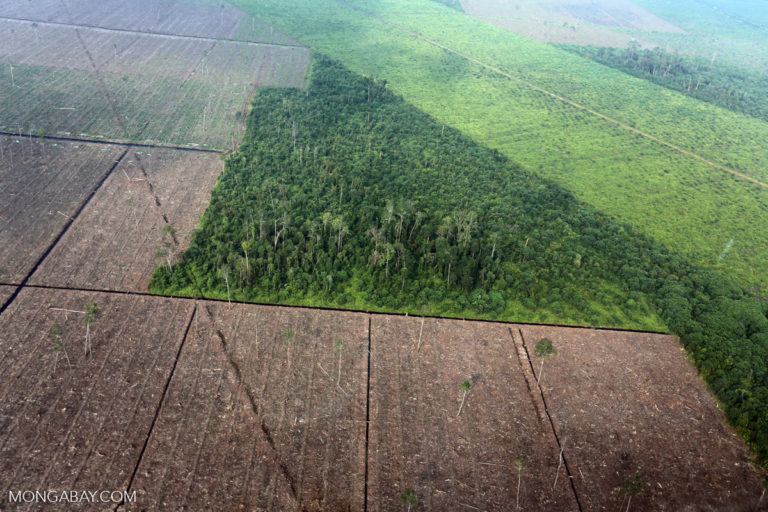
After initially planning to end its timber legality verification system (SVLK) for the export of timber products, Indonesia reversed itself and kept the program in place. The move would have blocked Indonesian wood products from some international markets, including the E.U.
A study published in Science Advances found that the Indonesia government’s poverty-alleviation program was as successful in reducing deforestation as dedicated conservation programs. Another study, published in PNAS, found that providing high-quality health care can be a strong incentive to avoid deforestation. The study concluded that deforestation in West Kalimantan’s Gunung Palung National Park fell 70% after a health clinic opened nearby.
A wetter than normal dry season meant that the fires and haze that have often affected Indonesia in recent years were less widespread in 2020, easing fears that air pollution could make COVID-19 especially deadly.
Congo Basin
Central Africa is experiencing the highest acceleration in deforestation of any major forest region on Earth. The forests of the Congo Basin face myriad threats: increased interest from industrial agriculture, proliferating road networks, new oil and gas exploration, and a regional drying trend. But foreign governments have also recently pledged more aid to Congo forest conservation.
The Democratic Republic of Congo (DRC) accounts for about 60% of the Congo Basin’s primary forest cover and nearly 80% of its loss. As such, it is seen by some as a bellwether for the region. In 2020 there were signs that forest disturbance may still be on an upward trend. In January, DRC granted nine forest concessions, covering more than 2 million hectares (5 million acres), to two Chinese companies, which environmental NGOs said violated a national moratorium on new concessions. NGOs have said COVID-19 has not slowed rampant illegal logging in the country.
DRC’s northern neighbor, the Republic of the Congo, has the third-largest extent of primary forest in the Congo Basin, but a much lower rate of loss. Accordingly, when the country last year announced a huge oil discovery in its enormous forested peatland, there were considerable concerns that oil extraction could become a major driver of degradation and carbon emissions. Responding to that worry, France and Germany offered up 60 million euros ($73 million) in aid to reduce the potential impact. However, a 2020 investigation by Der Spiegel and Mediapart suggest that the “alleged oil-field discovery was a bluff” or “an audacious exaggeration” to attract aid money from European governments. In other words, the deforestation threat from the supposed oil find remains low.
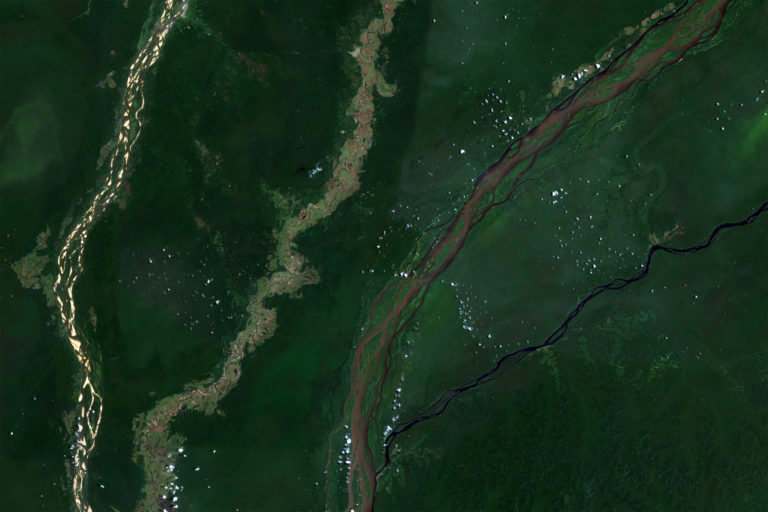
Gabon ranks just ahead of the Republic of the Congo in terms of forest cover in the Congo Basin. The country has historically had a very low deforestation rate, but loss has been rising as industrial agriculture expands in the country. In 2020 the biggest news on the deforestation front in Gabon was around an FSC investigation into whether Olam, a Singapore-based agribusiness company, deforested more than 25,000 hectares (62,000 acres).
Cameroon approved a 68,385-hectare (168,983-acre) logging concession in Ebo Forest, more than one-third of southwestern Cameroon’s largest intact forest. The area, which in the early 2010s was poised to be protected as a national park, is home chimpanzees, drills, and lowland gorillas. Meanwhile, an investigation by the Environmental Investigation Agency found evidence of illegal logging in the buffer zone of the Dja Fauna Reserve, a designated UNESCO World Heritage Site and a Biosphere Reserve.
Other regional developments
With deforestation trending upward in recent years, Peru cracked down on illegal gold mining, investigated large-scale deforestation linked to Mennonite communities, and took action against illegal logging. But new road projects, ongoing illegal logging and mining, and corporate efforts to undermine public prosecutors continued to post threats to Peruvian forests.
Read more: Peru news feed | Top stories in 2020 (Spanish)
More than 1.4 million hectares of Bolivia burned in 2020. Most of the forest fires occurred in the country’s dry Chaco forests. Protected areas were affected.
Colombia secured £64 million from the U.K. to protect forests, but still struggled to get a handle on rising deforestation. In January, Colombian President Iván Duque announced a goal to plant 180 million trees to restore some 300,000 hectares of degraded land, but National Nature Parks of Colombia has been forced to abandon 10 Amazonian parks that cover nearly 9 million hectares due to violence and threats from narcotraffickers, former FARC rebels, and other armed groups. These parks include Indigenous territories. Killings of environmental defenders and human rights advocates topped 300 people.
Read more: Colombia news feed | Top stories in 2020 (Spanish)
Sugarcane companies began clearing land within Bugoma Forest in Uganda after the environment authority approved an environmental impact assessment. The effort to clear Bugoma Forest for sugarcane has been a flashpoint since 2014.

Ongoing deforestation in Cambodia, including clearing of Keo Seima and Prey Lang wildlife sanctuaries continued to attract attention. A proposed reform of the country’s environment code remained stalled.
Deforestation for timber production and the establishment of plantations—including oil palm plantations—continued in Myanmar in 2020, despite regional crackdowns last year, including raids by Chinese authorities on stockpiles on China’s side of the border. Some of the illegally logged timber makes its way into E.U. markets despite the European Union Timber Regulation (EUTR), found an investigation by the Environmental Investigation Agency (EIA). On the conservation front, ethnic minorities in Myanmar raised concerns about lack of consultation on proposed conservation projects. Paul Sein Twa, a member of the Karen Indigenous group, won the Goldman Environmental Prize for his efforts to establish the 546,000-hectare Salween Peace Park, which encompasses 27 community forests and three wildlife sanctuaries.
Drivers of deforestation
2020 was a year when civil society focused more attention on “financed emissions,” the emissions released by companies in which financial institutions invest. In a tropical forest context, that means environmentalists targeted the banks, investment funds, asset managers, and other institutions that fund commodity production and infrastructure in tropical forests. Accordingly, a spate of reports were released in 2020, tying companies like Morgan Stanley, BlackRock, Citigroup, JPMorgan Chase, Goldman Sachs, and HSBC to deforestation in the Amazon and beyond.

From fires to deforestation, researchers continued to document the outsized impact cattle ranching in the Amazon, which accounts for more forest loss in the tropics than any other driver, has on planetary health. And activists continued to target Brazil’s biggest cattle producers and the actors who source from them, including a major beef supplier to the U.K. military and the fashion industry. Investigations showed that despite promises to clean up their supply chains, lack of transparency and accountability remains a problem for the Brazilian cattle industry.
“Forest risk” commodities like palm oil, timber and wood pulp production, and soy were also priorities for campaigners in 2020. Companies continued to establish and strengthen zero-deforestation commitments, sometimes in response to shareholder pressure. For example, Tyson Foods committed to a no-deforestation policy after activist investors led by Green Century Capital Management pressured the world’s second-biggest meat processor to do so. Two-thirds of Proctor & Gamble (P&G) shareholders voted to approve a resolution to address deforestation and forest degradation in the consumer product company’s supply chain. Ceres, a nonprofit that helps investors and companies adopt sustainability policies and practices, published an Investor Guide to Deforestation and Climate Change for institutional investors that covered the material risks of deforestation, forest risk commodities and countries, and how to evaluate corporate forest policies.
Palm oil
After dipping sharply in March and April due to the spread of COVID-19, the price of palm oil surged, reaching the highest level in more than six years by the end of 2020. Growers may see the rising price, coupled with relaxed regulations and a massive buying program from the Indonesian government in the form of a biodiesel mandate, as a signal to ramp up expansion.

Concerns over the environmental impact of converting rainforests and peatlands to oil palm plantations has spawned the rise of the corporate “no deforestation, no peat, no exploitation” (NDPE) policy over the past decade. Hundreds of companies across the palm oil supply chain, from producers to traders to food and cosmetics manufacturers, have established such policies and pledged to significantly reduce or eliminate deforestation for palm oil production in their supply chains by the end of 2020. Yet the Zoological Society of London’s (ZSL) annual assessment of 100 of the world’s largest palm oil players suggests that many companies will fail to meet these commitments by their self-imposed deadlines.
The most conspicuous palm oil company, Wilmar, unsurprisingly continued to be a focal point for advocacy groups trying to effect change in the palm oil sector. Notably, Wilmar attracted criticism when it exited the the steering group of the High Carbon Stock Approach (HCSA), which helps set the rules that underpin NDPE policies. That decision was immediately relevant to a case in Papua, where a Wilmar supplier was found to be clearing primary rainforest for oil palm.
PepsiCo, another long-time target of environmental groups, updated its NDPE policy for palm oil to extend to all subsidiaries and third-party suppliers. The move was notable because PepsiCo’s Indonesian joint-venture partner, Indofood, has been found in breach of such policies by the Roundtable on Sustainable Palm Oil (RSPO), the dominant certification body for the palm oil sector.
A comprehensive study based on socioeconomic data found that oil palm development has had mixed impacts on local peoples’ livelihoods in Indonesia. Communities that are more dependent on forests tend to fare worse when oil palm expansion occurs, whether or not those plantations are certified by the RSPO.
Read more: Top Indonesian palm oil developments in 2020
Amazon soy
A number of studies looked at the environmental footprint of soy from the Amazon rainforest and the Cerrado, a neighboring woody savanna. One study, published in the journal Global Environmental Change, estimated that China accounted for 51% of carbon dioxide emissions associated with Brazil soy exports, while the European Union is responsible for about 30%. That study also found that EU imports were also more likely to cause new deforestation compared to imports from China. These concerns contributed to France’s announcement on Dec. 1 that it would eventually eliminate soy imports from Brazil.

While research and NGO reports found the impact of soy on the Amazon and Cerrado to be significant, another study argued the impact of soy production in Brazil would have been far worse had a group of companies not signed the Amazon soy moratorium in 2006. That research, published in the journal Nature Food, concludes that deforestation in the Brazilian Amazon between 2006 and 2016 was 35% lower than it would have been without the moratorium, avoiding deforestation of some 18,000 square kilometers (7,000 square miles) of Amazon forest. The moratorium, which was established after a Greenpeace campaign, eventually became the blueprint for zero-deforestation policies that came to be applied to other tropical commodities like palm oil, rubber, cacao, and wood pulp.
Technology
By restricting access to the field, the pandemic amplified the importance of remote-sensing technologies at a time when advances in monitoring tropical forests were already accelerating. One of the biggest news stories is this space was the Norwegian government’s decision to pay three satellite monitoring technology groups — Kongsberg Satellite Services, Planet, and Airbus — to provide free access to high-resolution satellite imagery of the tropics, which will help researchers, governments, and civil society improve forest monitoring, emissions tracking, and the use of AI to anticipate land use change.
After last year’s headline-grabbing fire season in the Amazon, researchers applied new tools and methodologies to fire mapping in the region. For example, NASA rolled out an automated near-real-time fire monitoring system that differentiates between land use history and fire type. The Amazon Conservation Association’s MAAP Initiative deployed its own fire tracking effort, which was the first to publicly distinguish agricultural fires and forest fires at scale in the Amazon.
But just like how the pandemic amplified the digital divide between the haves and have nots across society as a whole, human rights advocates warned that the same issue is affecting the digitization of land registries. A report from human rights group GRAIN said that communities that lack familiarity with technological tools are finding themselves at a disadvantage as governments move toward digital land registries.
The boom in renewable energy also brought greater scrutiny to the impact of production of the metals and other materials that go into battery technologies. Elon Musk raised eyebrows when he tweeted “We will coup whoever we want! Deal with it,” in response to the ouster of the president of lithium-rich Bolivia — suggesting that the Telsa CEO would back coups that benefit his companies. After sharp criticism, Musk deleted the Tweet and said Tesla gets its lithium from Australia.
Action by consuming countries
Rich-world governments continued to consider how their population’s consumption of commodities drives deforestation in the tropics. The U.K. put forth a new law that would make it illegal to for large companies operating in the country to use products grown on land that was illegally deforested. That law, if passed, would effectively require big companies to carry out due diligence on their supply chains.
In October, the governments of Switzerland and Peru reached a carbon offsetting deal under Article 6 of the Paris climate agreement. Switzerland will get carbon credits generated by financing sustainable development projects that reduce greenhouse gas emissions in the South American nation. That deal could become a model for other bilateral agreements.

The French government, which pledged in 2019 to stop “deforestation imports” by 2030, continued to move forward on its National Strategy to Combat Imported Deforestation, announcing it aimed to stop importing soy from Brazil.
Norway increased the rate it pays tropical countries to protect rainforests and made its first payment to Indonesia under a REDD+ agreement signed in 2010.
China’s revision to its forest law, which bars companies from buying or processing illegal timber, came into effect July 1, 2020. On paper, the law could be a “game changer” for the world’s largest importer of tropical timber, according to the Environmental Investigation Agency (EIA), but it is unclear how it will be interpreted and enforced.
Forest research
While there was plenty of important tropical forest research published in 2020, here is a small set of noteworthy studies that didn’t fit into the sections above.
Only 47% of the world’s tropical rainforests have high “ecological integrity”, meaning they have tall, closed canopies and limited human activity. Less than 7% of these forests are legally protected. (Nature Ecology and Evolution)
Between 1992 and 2014 forest degradation outpaced deforestation in the Brazilian Amazon. During that period, 308,311 square kilometers were cleared outright, while 337,427 square kilometers were merely degraded, primarily by logging and fires. (Science)
Warmer temperatures shorten the lifespans of tropical trees, especially when mean annual temperatures exceed 25.4° Celsius. With climate change expected to increase temperatures significantly across the tropics, the capacity of rainforests to sequester carbon may be diminished. (Proceedings of the National Academy of Sciences)
Only 47% of the world’s tropical rainforests have high “ecological integrity”, meaning they have tall, closed canopies and limited human activity. Less than 7% of these forests are legally protected. (Nature Ecology and Evolution)
Long-lived pioneer trees account for a disproportionate amount of carbon stored in tropical forests, making them especially important in sequestering atmospheric carbon dioxide. (Science)
Defaunation of large-bodied animals in tropical forests is degrading the capacity of such forests to store carbon and afford other important ecosystem services. (Nature Communications)
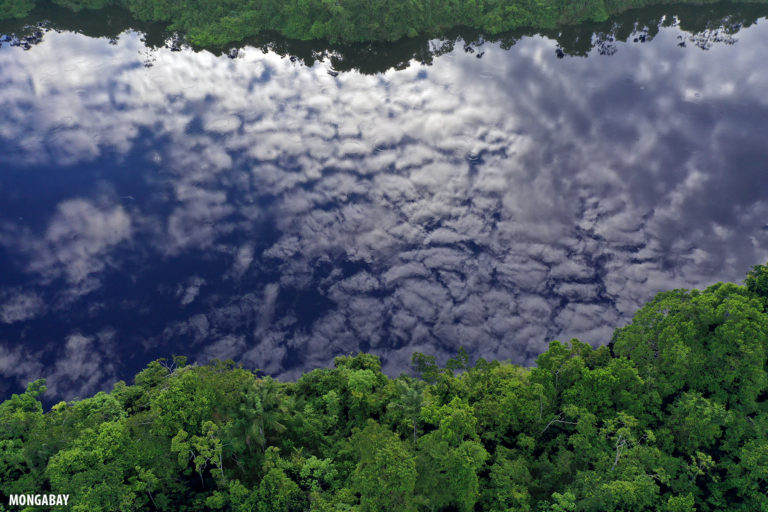
China, Brazil, and Indonesia have the greatest potential for sequestering carbon via reforestation projects. Russia, the U.S., India, and the Democratic Republic of Congo are other strong candidates. (Nature)
Less than 10% of the world’s protected areas are connected by land that’s considered intact, making it difficult for some species to move from one refuge to another and hurting the ability of these ecological “islands” to adapt to environmental change. (Nature Communications)
Planned road projects in the Amazon could unleash 2.4 million hectares of deforestation in the next 20 years. (Proceedings of the National Academy of Sciences)
12 REDD+ (Reduced Emissions from Deforestation and forest Degradation) projects in the Brazilian Amazon have tended to overstate their climate benefits, concluded a study which looked at 12 voluntary projects. The research found the exaggerated emissions savings tended to result from deforestation baselines that failed to account for broader reductions in deforestation that occurred independently. (Proceedings of the National Academy of Sciences)
Deforestation typically accelerates once 50% of an area’s forest is loss, suggesting the halfway point represents a critical tipping point or threshold. (Geophysical Research Letters)
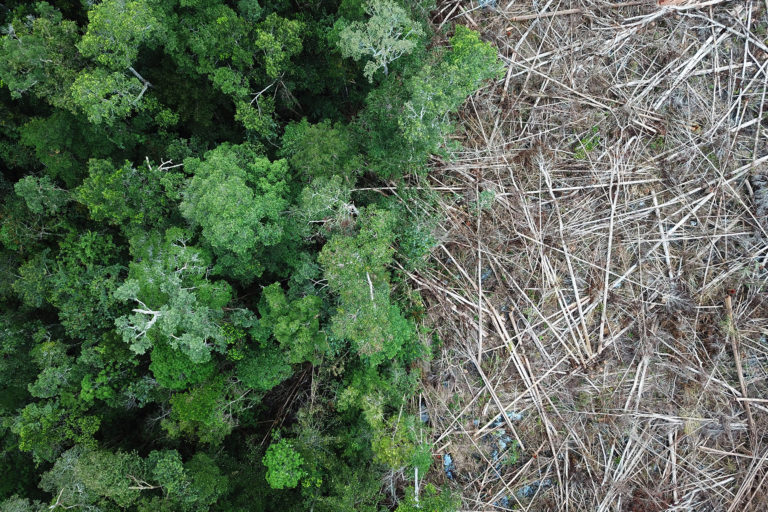
Humans have contributed to 56% decline in species in mammal assemblages across the American tropics since European colonization began around 1500. (Nature Scientific Reports)
Climate change may be driving a sharp decline in fruit production in Gabon, making life more challenging for resident megafauna. (Science)
What’s in store for 2021?
Next week, Mongabay will took at look at some of the tropical forest trends and potential developments to watch in 2021.
Related posts:

 Oil palm plantations in Amazonia inhospitable to tropical forest biodiversity: Study
Oil palm plantations in Amazonia inhospitable to tropical forest biodiversity: Study
 ‘A shame for the world’: Uganda’s fragile forest ecosystem destroyed for sugar
‘A shame for the world’: Uganda’s fragile forest ecosystem destroyed for sugar
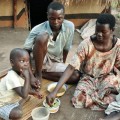 About 41 million people food insecure in E. Africa amid COVID-19 pandemic: UN
About 41 million people food insecure in E. Africa amid COVID-19 pandemic: UN
 Bugoma forest under threat again as more 2000Ha is dished to investors
Bugoma forest under threat again as more 2000Ha is dished to investors
You may like
SPECIAL REPORTS AND PROJECTS
Global use of coal hit record high in 2024
Published
3 weeks agoon
November 3, 2025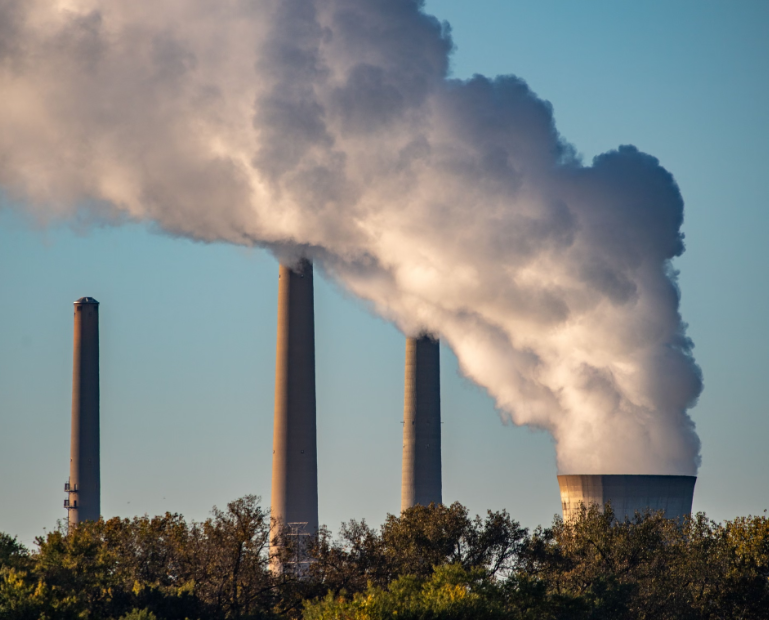
Bleak report finds greenhouse gas emissions are still rising despite ‘exponential’ growth of renewables.
Coal use hit a record high around the world last year despite efforts to switch to clean energy, imperilling the world’s attempts to rein in global heating.
The share of coal in electricity generation dropped as renewable energy surged ahead. But the general increase in power demand meant that more coal was used overall, according to the annual State of Climate Action report, published on Wednesday.
The report painted a grim picture of the world’s chances of avoiding increasingly severe impacts from the climate crisis. Countries are falling behind the targets they have set for reducing greenhouse gas emissions, which have continued to rise, albeit at a lower rate than before.
Clea Schumer, a research associate at the World Resources Institute thinktank, which led the report, said: “There’s no doubt that we are largely doing the right things. We are just not moving fast enough. One of the most concerning findings from our assessment is that for the fifth report in our series in a row, efforts to phase out coal are well off track.”
If the world is to reach net zero carbon emissions by 2050, in order to limit global heating to 1.5C above preindustrial levels, as set out in the Paris climate agreement, then more sectors must use electricity instead of oil, gas or other fossil fuels.
But this will work only if the global electricity supply is shifted to a low-carbon footing. “The trouble is that a power system that relies on fossil fuels has huge cascading and knock-on effects,” said Schumer. “The message on this is crystal clear. We simply will not limit warming to 1.5C if coal use keeps breaking records.”
Though most governments are supposed to be aiming to “phase down” coal use after a commitment made in 2021, some are pushing ahead with the most polluting fuel. India’s prime minister, Narendra Modi, celebrated surpassing 1bn tonnes of coal production this year, and in the US Donald Trump has declared his support for coal and other fossil fuels.
Trump’s efforts to halt renewable energy projects, and remove funding and incentives for switching to low-carbon power sources, have largely not made themselves felt yet in the form of higher greenhouse gas emissions. But the report suggested these efforts would have an effect in future, though others, including China and the EU, could blunt the impact by continuing to favour renewables.
The good news is that renewable energy generation has grown “exponentially”, according to the report, which found solar to be “the fastest-growing power source in history”. This is still not enough, however: the annual growth rates of solar and wind power need to double for the world to make the emissions cuts needed by the end of this decade.
Sophie Boehm, a senior research associate at the WRI’s systems change lab and a lead author of the report, said: “There’s no question that the United States’ recent attacks on clean energy make it more challenging for the world to keep the Paris agreement goal within reach. But the broader transition is much bigger than any one country, and momentum is building across markets and emerging economies, where clean energy has become the cheapest, most reliable path to economic growth and energy security.”
The world is moving too slowly on improving energy efficiency, in particular cutting the carbon generated by heating buildings. Industrial emissions are also a concern: the steel sector has been increasing its “carbon intensity” – the carbon produced with each unit of steel manufactured – despite efforts in some countries to move to low-carbon methods.
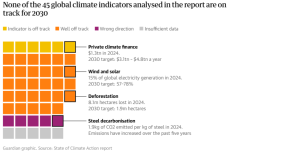
Electrifying road transport is moving faster – more than one in five new vehicles sold last year was electric. In China, the share was closer to half.
The report also sounded a warning on the state of the world’s “carbon sinks” – forests, peatlands, wetlands, oceans and other natural features that store carbon. While nations have repeatedly pledged to protect their forests, they continue to be cut down, albeit at a slower rate in some areas. In 2024, more than 8m hectares (20m acres) of forest were permanently lost. That is lower than the high of nearly 11m hectares reached in 2017, but worse than the 7.8m hectares lost in 2021. The world needs to move nine times faster to halt deforestation than governments are managing, the report found.
World leaders and high-ranking officials will meet in Brazil next month for the Cop30 UN climate summit, to discuss how to put the world on track to stay within 1.5C of global heating in line with the 2015 Paris climate agreement. Each government is supposed to submit a detailed national plan on emissions cuts, called a “nationally determined contribution”. But it is already clear that those plans will be inadequate, so the key question will be how countries respond.
Source: theguardian.com
Related posts:

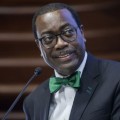 African Development Bank decides not to fund Kenya coal project
African Development Bank decides not to fund Kenya coal project
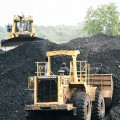 World Bank branch indirectly backs coal megaproject despite green pledge
World Bank branch indirectly backs coal megaproject despite green pledge
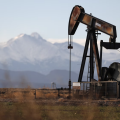 Banks have given almost $7tn to fossil fuel firms since Paris deal, report reveals
Banks have given almost $7tn to fossil fuel firms since Paris deal, report reveals
 30 civil society organizations have written to the World Bank Group demanding to publicly disclose the Africa Energy Approach paper.
30 civil society organizations have written to the World Bank Group demanding to publicly disclose the Africa Energy Approach paper.
SPECIAL REPORTS AND PROJECTS
The Environmental Crisis Is a Capitalist Crisis
Published
3 weeks agoon
November 3, 2025
One of humanity’s greatest challenges today is the environmental crisis, which threatens our very existence. Our latest dossier explores its class character, showing that the climate catastrophe is a product of capitalism’s relentless drive for accumulation.
The photographs in this dossier were taken by Sebastião Salgado, one of Brazil’s – and the world’s – greatest photographers. He passed away in May 2025, leaving behind an artistic legacy inseparable from his commitment to humanity and the preservation of the environment. Salgado travelled the globe portraying peoples, territories, and workers with dignity, capturing life’s beauty while bearing witness to an era marked by capitalism’s brutality against humanity and nature. His photographs, like this dossier, remind us that we cannot remain mere spectators of destruction: we must be agents of change.
We are grateful to the team that safeguards his legacy and, in a spirit of solidarity, authorised the use of his images to enrich and strengthen this dossier.

Capitalism Will Not Solve the Environmental Crisis
The environmental crisis is one of the greatest challenges we face today. At its root lie the capitalist mode of production and the logic of capital accumulation pursued by the ruling classes of the Global North and South. The devastation wrought by capitalism is plain for all to see, as climate change intensifies and accelerates year after year, threatening the very existence of humanity. As Fidel Castro warned in his speech at the 1992 UN Conference on Environment and Development in Rio de Janeiro, ‘An important biological species is in danger of disappearing due to the rapid and progressive liquidation of its natural living conditions: humanity’.1
Many international organisations and bodies have sought solutions to the environmental crisis, but always within the framework of capitalism. In November 2025, the United Nations Climate Change Conference (COP30) will be held in Belém, Pará, in the Amazon region of Brazil. The Amazon is home to countless generations of Indigenous peoples who, through their interaction with nature, have allowed the planet’s most biodiverse ecosystem to flourish.
Today, the Amazon is the site of one of capitalism’s central contradictions: agribusiness destroys it by burning and clearing land to expand the agricultural frontier while the very same land is financialised by transnational corporations trading its territories as carbon reserves on stock exchanges. While the ruling classes insist on presenting the environmental crisis as a problem for all of humanity – without any class distinctions – we must not forget that the class contradictions inherent to capitalism are also reflected in the environmental question. In fact, those most affected by climate disasters are the urban and rural poor, who live under precarious conditions in hazard-prone areas.
One of the main tasks in the battle of ideas is therefore to politicise the debate around the environmental crisis by showing its class character – something that is urgently needed, as reflected by a recent survey that found that more than 30% of Brazil’s population is unaware of climate change, with this figure rising to over 50% among the lowest income groups.2
In light of this reality, this dossier seeks to popularise the debate on the environmental crisis from a Brazilian and Global South perspective in dialogue with working-class organisations. In this dossier, we analyse the causes of the environmental crisis and examine, and critique, proposals for a transition to a low-carbon economy. By seeking alternatives within capitalism, such proposals create new forms of accumulation without resolving the root problem. Finally, we present popular solutions to the crisis along with a set of demands that have emerged from the accumulated experience of Brazil’s popular movements.
Serra Pelada Goldmine, Pará, Brazil, 1986. © Sebastião Salgado
The Destruction of Life and the Logic of Capital
Climate change is the most visible and urgent aspect of the environmental crisis. Chemical pollution, loss of soil cover, ocean acidification, biome destruction, and the loss of biodiversity are also fundamental dimensions of the crisis. As Vijay Prashad rightly pointed out:
One million of the estimated eight million species of plants and animals on the planet are threatened with extinction. The main threat to the majority of species at risk of extinction is biodiversity loss caused by the capitalist agribusiness system of food production. Agricultural production – currently accounting for more than 30% of the world’s habitable land surface – is responsible for 86% of projected losses in terrestrial biodiversity because of land conversion, pollution, and soil degradation.3
The environmental crisis manifests in ways that underscore its inseparability from the class struggle. We see this in the floods that devastated southern Brazil in 2024; the heatwave and then floods that hit Pakistan in 2022, leaving millions homeless while elites remained protected; the 2018 floods in Kerala, India; the 2022 flooding and blackouts in Cuba caused by Hurricane Ian – a phenomenon intensified by rising ocean temperatures; and the increasingly extreme cycles of floods and droughts in the Horn of Africa. From 2019 to 2020, Ethiopia, Kenya, and Somalia faced heavy rains followed by devastating floods. From 2020 to 2023, these countries faced one of the longest droughts in the past seventy years, only to be hit by new floods in 2023–2024. These instances show that the environmental crisis is deepening.4
The main factor driving climate change is the high level of greenhouse gas (GHG) emissions from fossil fuels as energy consumption from these fuels continues to rise year after year. If we take a closer look at global emission levels, the data once again speaks volumes: the richest 10% are responsible for nearly twenty times more emissions than the poorest 50%.5
Moreover, both historic and current GHG emissions are directly linked to inequality – not only between the Global North and South but also between the richest and poorest segments of the global population. According to the Global Carbon Project, the twenty-three most developed countries account for half of all CO2 emissions since 1850. The United States alone has emitted 24.6% of all carbon released into the atmosphere, followed by Germany (5.5%), the United Kingdom (4.4%), and Japan (3.9%). The other half of emissions is spread across more than 150 countries.6
Recent data shows that this reality has not changed: according to a 2022 study by Climate Watch, the World Resources Institute’s data platform, the ten largest emitters are still responsible for 76% of global CO2 emissions. In 2022 China was the largest emitter of CO2, followed by the United States, India, Russia, and Japan, which would make Asia the planet’s biggest emitter today.7
However, because the populations of countries such as China and India are much larger than those of the United States, European countries, Japan, or Australia, measured in per capita emissions the United States is by far the world’s largest CO2 emitter, with a per capita rate twice that of China and eight times higher than India’s.8
Globally, the fossil fuel industry is the largest emitter of CO2, with roughly one hundred companies responsible for 71% of global historical CO2 emissions, according to a Carbon Majors report published in 2017.9
Among them are giants such as ExxonMobil, Shell, BHP Billiton, and Gazprom. Another 2019 study by the Climate Accountability Institute found that just twenty companies have been responsible for one-third of all global CO2 emissions since 1965.10
Agribusiness is another structural driver of GHG emissions. In 2023 alone, 3.7 million hectares of forest were cleared worldwide, largely for cattle ranching and industrial crops. Over the past twenty years, the sector’s production chain – from fertilisers to processing and transport – has increased its emissions by 130%.11
Though the energy sector accounts for approximately three-quarters of GHG emissions on a global scale, it is worth taking a closer look at countries where raw materials dominate exports. Brazil is a striking example of this: according to the Plan for Ecological Transformation published by the Ministry of Finance, agribusiness is the country’s largest source of GHG emissions, directly accounting for 29% of the total. Deforestation-related emissions add another 38%, with livestock and agriculture responsible for about 96% of deforested land, according to the 2022 Annual Deforestation Report. Taken together, agribusiness is responsible for roughly 67% of Brazil’s total GHG emissions, compared to just 23% from energy generation.12
Predatory extractive practices also play a major role, especially in Global South countries, from mining to the purchase of natural and Indigenous reserve lands by foreign interests as carbon market assets.
Despite regional and national differences, what is clear is that climate change and the destruction of nature are direct consequences of the logic of capital accumulation advanced by the ruling classes.
Kuningan District, Jakarta, Indonesia, 1996. © Sebastião Salgado
Green Capitalism: Supposed Alternatives to the Environmental Crisis
Various socialist currents have raised ecological concerns since the early days of capitalism, from the nineteenth-century socialist and artist William Morris to the environmental and countercultural movements of the mid-twentieth century. Yet it was only in the 1970s, more than a century after the first industries appeared, that the environment became a matter of concern for nation-states and began to gain prominence on the international political agenda. The 1972 United Nations Conference on the Human Environment, held in Stockholm, Sweden, was a milestone in advancing the environmental question. As Andrei Cornetta notes:
In addition to population growth in a context of resource scarcity, [the conference] also discussed how to bring various forms of [water, air, and soil] pollution under control at a time when the global energy crisis was on the agenda, especially after the impact of the oil shock of 1973.13
Despite the urgency of the environmental question, no new forms of organising production or relating to nature were proposed at the conference: rather, all alternatives fit within the capitalist mode of production. Meanwhile, growing social and economic inequality between the imperialist core and the dependent periphery sharpened the debate, especially regarding whether to continue developing or to restructure the industrial model along ‘zero growth’ lines.14
In 1979, the First World Climate Conference in Geneva acknowledged the seriousness of ongoing climate change. It was not until 1992 that the Second United Nations Conference on Environment and Development took place in Rio de Janeiro, where a multilateral agenda to address the climate question was proposed. This agenda entered into force in 1994 and served as the precursor to the Conference of the Parties (COP), the decision-making body for the United Nations Framework Convention on Climate Change which meets biennially to review and advance the convention.
Among the many outcomes of the COP process, two stand out. First, the Kyoto Protocol, adopted after COP 3 in 1997, which set binding quantitative targets for reducing GHG emissions for Annex I countries (those that had been industrialised the longest). Second, the Paris Agreement, adopted after COP 21 in 2015, which required signatory countries to set their own emission reduction targets, known as Intended Nationally Determined Contributions.15
However, the targets were never met and both the Kyoto and Paris agreements ended up as failures.
In response to the urgency of climate change, some states have promoted a transition to a low-carbon economy aimed at reducing the amount of harmful GHG emissions – without, of course, touching the profits of major corporations and the capitalist core. From this approach emerged so-called ‘green capitalism’ alternatives, including carbon markets, offset schemes, and energy transition policies.
The Kyoto Protocol emission targets, initially intended to curb air pollution, soon became the basis for a new form of capital accumulation via so-called carbon credits16
that are traded on stock exchanges and function as a kind of ‘license to pollute’.17
This system involves not only financial capital but also significant technological and scientific developments that measure and calculate carbon emissions. They also project potential reductions by modelling what emissions would have been in the absence of offset activities. These offset schemes include reducing emissions caused by deforestation and forest degradation as well as promoting forest conservation, sustainable management, and an increase in forest carbon stocks. However, in practice, once companies exceed their GHG emission limits, they can buy carbon credits on the stock exchange to offset their emissions. Thus, the biophysical process by which plants absorb carbon from the air and convert it to oxygen through photosynthesis – a natural function of plant life and part of the commons – is turned into a commodity.
The main contradiction of green capitalism is that the same agribusiness, oil, and mining transnational corporations that shape the environmental agenda in international bodies and national governments are also those that most aggressively exploit the commons. The agribusiness sector, which drives deforestation and burning in the Cerrado and Amazon biomes18
in order to expand the agricultural frontier, also touts the digitalisation of its production chains, which certify that its products are deforestation-free and decarbonised. Similarly, oil corporations are involved in energy transition policies, and mining companies promote carbon market schemes.
In Brazil, agribusiness – the main source of the country’s GHG emissions – has made sustainability a central theme of its ideological campaign. Far from a genuine commitment to sustainability, this serves as a way to expand into other sectors, increase political influence, and boost profits.19
The agribusiness model – based on large-scale monocultures and the extensive use of pesticides – is among the most damaging to the environment. Yet while companies pursue new avenues of profit through the financialisation of nature and a discourse of sustainability, their production model has not changed; on the contrary, it continues to drive deforestation, burning, and the poisoning of soil, water, and air.
By playing an active role in advancing false solutions to the environmental crisis, the very sectors that most damage the environment have found new ways to profit from the financialisation of nature. These sectors are present not only in government ministries across many countries, but also in international climate bodies and conferences such as the COP. The environmental agenda has long been captured by transnational corporations, and the alternatives they propose never challenge the profit rates of big capital. Brazilian agribusiness, with its rhetoric of sustainability, is among the key players in these international bodies. Brazilian companies such as Suzano Papel e Celulose,20
the food multinational JBS, and the mining corporation Vale all play a major role in ‘sustainability’ projects and the carbon market. For them, offset schemes have become a lucrative form of capital accumulation.
Take, for example, the Maísa project in the Brazilian state of Pará, run by the leading carbon market certifier Verra. The project was meant to preserve a 26,000-hectare stretch of the Amazon rainforest that included the Sipasa Farm, yet the designated protection area later became a mining site, and in early 2024 sixteen farm workers were rescued from conditions comparable to slavery. The fallacy – and failure – of such projects is clear: they serve transnational giants like iFood, Uber, Spotify, Audi, and Google, which pour millions of dollars into offset schemes to cover the emissions generated by their own activities.21
In addition to commodifying one of nature’s commons, projects like Maísa harm biodiversity and undermine the way of life of Indigenous communities who, through the labour of countless generations, have helped shape these forests and their biodiversity. By promoting solutions that fail to confront the destructive logic of capitalist accumulation, such schemes destroy ways of life that have coexisted in harmony with nature for millennia.
The 2019 report by the Intergovernmental Science-Policy Platform on Biodiversity and Ecosystem Services paints an alarming picture of ecological collapse brought on by such projects:
One million of the roughly eight million plants and animal species are threatened with extinction; human activity has driven at least 680 vertebrate species to extinction since 1500, while global populations of vertebrate species have fallen by 68% over the last fifty years; the abundance of wild insects has fallen by 50%; and by 2016, more than 9% of all domesticated mammal breeds used in food and agriculture had gone extinct, with another thousand breeds now facing extinction.22
One thing is clear: there are no capitalist solutions to a crisis created by capitalism. If we are to save the Earth and humanity, the answers must come from beyond capitalism.
Cuiabá Farm, Xingó Backlands, Sergipe, Brazil, 1996. © Sebastião Salgado
Popular Perspectives on the Environmental Question
At the 1992 UN Conference on Environment and Development in Rio de Janeiro, Fidel Castro underscored the urgency of the environmental crisis from an emancipatory perspective and condemned the unjust economic and social order between dependent countries in the periphery and those at the capitalist core:
It must be said that consumer societies are primarily responsible for the atrocious destruction of the environment… With only 20% of the world’s population, they consume two-thirds of the metals and three-quarters of the energy produced worldwide. They have poisoned the seas and rivers, polluted the air, weakened and perforated the ozone layer, and saturated the atmosphere with gases that alter the climate with catastrophic effects from which we are already beginning to suffer… It is impossible to blame this on the countries of the Third World – yesterday’s colonies, today’s exploited and plundered nations by an unjust world economic order… If we are to save humanity from this self-destruction, we must achieve a fairer distribution of the wealth and technology available on the planet – less luxury and less waste in a few countries so that there may be less poverty and less hunger across much of the Earth.23
What is at stake is nothing less than the survival of human life on Earth. The environmental crisis is a product of the crisis of capital, which not only fails to resolve problems such as hunger and inequality but deepens them while relentlessly seeking new ways to generate profit for the ruling classes. The environmental struggle must therefore be waged as a direct confrontation with, and ultimate overcoming of, the capitalist mode of production. Unless we challenge the logic of capital – based on the exploitation of working-class labour and the plunder of the Global South – we will not be able to confront the environmental crisis.
The struggle for climate justice must combat not only inequality between the Global North and South but also environmental racism, as it is the poorest, and disproportionately Black and Brown, populations in the Global South that are the most exposed to the effects of the environmental crisis. In Brazil, for example, a study found traces of glyphosate – one of the most widely used pesticides in agribusiness – in breast milk across several regions. Meanwhile, the environmental crimes committed by the mining transnationals Samarco, Vale, and BHP Billiton in the cities of Mariana (2015) and Brumadinho (2019), in Minas Gerais state, not only killed nearly 300 people but also devastated the biodiversity of the Doce River, which runs through Minas Gerais and Espírito Santo, disrupting the way of life of numerous comunidades ribeirinhas<24 (river communities).25
Brazil’s Black population, which is concentrated in urban peripheries, is also disproportionately affected by the environmental crisis, such as in the form of frequent floods and landslides. Women, too, are more acutely impacted than the general population; in rural areas, for example, it often falls on them to handle the pesticides that the agribusiness production model imposes on peasant families. Environmental and climate justice movements must therefore build close connections with antiracist and feminist struggles. The environmental crisis cannot be solved without confronting all forms of social inequality, from racism to patriarchy.
Among the many fronts of struggle, peasant movements linked to La Vía Campesina stand out. Their agenda calls for:
- Popular Agrarian Reform and the Defence of Peasant and Indigenous Territories. Popular Agrarian Reform is the struggle to democratise access to land, directly confront latifundios (large, landed estates), and combat the concentration of land in the hands of the few. This demand goes beyond land redistribution: it challenges the agribusiness model that commodifies nature and deepens the environmental crisis. The struggle for land is tied to the protection of Indigenous and quilombola lands, recognising land concentration as a colonial legacy that must be overcome. By defending peasant and Indigenous territories, La Vía Campesina seeks to ensure that land fulfils its social function as a space for life, work, and cultural reproduction rather than being reduced to a financial asset.
- Food Sovereignty. Food sovereignty is the right of peoples to decide what to produce, as well as for whom and how to produce it, and to guarantee access to healthy and culturally appropriate food. It stands in opposition to the logic of agribusiness, which prioritises export commodities over feeding the people. To achieve food sovereignty, it is essential to support regional food cultures, strengthen short supply chains, and prevent food production from being controlled by large corporations. In order to achieve food sovereignty, public policies must be enacted that strengthen peasant agriculture and ensure that food is treated as a right, not a business; such policies include mandating the institutional purchase of agroecological products and support of those markets.
- Agroecology. Agroecology calls for a radical change in the technological model of agriculture, replacing the predatory system of agribusiness with diversified forms of production that are in harmony with nature. This includes the use of bio-inputs, agroforestry, and sustainable soil management, which create biodiverse environments that are resilient to climate change. Beyond its technical dimension, agroecology is a political practice that builds new relationships between human beings and nature based on cooperation, peasant autonomy, and the recovery of traditional knowledge.
- Care for the Commons. Water, minerals, seeds, land, and biodiversity are not mere ‘natural resources’ or ‘raw materials’ to be exploited: they are commons that are essential to life. Protecting the commons is central to building a popular project for the countryside in which nature is not commodified but rather cared for as collective heritage, ensuring their care for current and future generations.
A central component of Brazil’s Landless Workers’ Movement (MST) is to plant trees and produce healthy food. This is an integral part of building popular agrarian reform, since overcoming the environmental crisis will only be possible through a new model of rural production based on agroecology and new social relations that overcome patriarchy, racism, and LGBTphobia while fostering cooperation and solidarity. As MST leader João Pedro Stédile said about the particular challenges that Brazil faces with respect to the environmental crisis (though his words apply to the Global South more broadly):
We need zero deforestation. There is no need to cut down a single tree to meet the people’s needs. We must ban the export of timber and gold and impose strict controls over mining activities and their environmental impacts. The country needs a publicly funded national reforestation plan to recover millions of hectares throughout the territory. To tackle pollution, mitigate rising temperatures, and confront the problem of individual transportation powered by fossil fuels, we must provide a plan for free, high-quality mass public transport, reforest major cities, and expand the use of solar energy in as many productive activities as possible. In the countryside, agrarian reform must advance with a national agroecology programme that produces healthy food free of agrotoxins for all the people.26
Another perspective that has emerged from social struggles in Latin America, especially in Ecuador and Bolivia, is buen vivir (good living), whose principles were incorporated into the new constitutions of both countries under presidents Rafael Correa and Evo Morales, respectively. Drawing on Indigenous traditions, buen vivir challenges capitalist notions of progress and development and is based on five principles: 1) a holistic vision, or Pacha;27
2) embracing multipolarity; 3) the search for balance; 4) the complementarity of diversity; and 5) decolonisation.28
Ecosocialism, for its part, is a political and theoretical current that combines socialism with radical ecology, criticising both capitalism and traditional socialism for ignoring the planet’s ecological limits. It aims to build an egalitarian and sustainable society in which the economy is reorganised to meet human needs without destroying the environment. For Michael Löwy, one of ecosocialism’s leading theorists, the central dilemma facing the working classes in the twenty-first century is the environmental crisis, which must be addressed from a socialist perspective that conceives of a new mode of production attuned to ecological challenges.
The environmental crisis will not be resolved by the ruling classes. This is the task of the rural and urban working classes. We must create another way of producing and reproducing life that is based on healthy relations between human beings and the environment and built through popular organisation. This path forward must expose the true culprits of the crisis and advance proposals that prioritise all forms of life over profit.
Pico da Neblina, Yanomami Indigenous Territory, Amazonas, Brazil, 2014. © Sebastião Salgado
A Minimum Agenda to Confront the Environmental Crisis
Brazil’s popular movements understand the need to wage struggles on multiple fronts. Despite the limits of the COPs and the negotiations held there, popular movements recognise that it is essential to pressure their governments to secure a minimum agenda that holds the social classes and countries most responsible for pollution accountable and combats the climate catastrophe driven by capitalism. In this spirit, working alongside the MST, we created an agenda to confront the environmental crisis:
I. Compliance with and Advancement of International Agreements
- Building on the agreements of the 1992 United Nations Conference on Environment and Development, which established the principle of ‘common but differentiated responsibilities’, compel Global North countries – which bear historical responsibility for the climate crisis – to rapidly cut their carbon emissions and prevent global temperatures from rising above the critical 1.5°C threshold.
- Ensure that Global North countries provide climate compensation to Global South countries for the losses and damages caused by their carbon emissions and provide substantial funding for public infrastructure to replace reliance on carbon-based energy.
- Fulfil the Paris Agreement pledge that Global North countries provide $100 billion annually to meet the needs of Global South countries, particularly for policies that mitigate the real and disastrous impacts of climate change that they are already experiencing (especially low-lying nations and small island states). These resources must come in the form of grants directly transferred to subnational projects for forest protection and restoration. Since loans are not transfers of resources, they should not be considered to fit within the scope of the Paris Agreement, though this has often been the case. These funds should serve as instruments of climate justice, not as pretexts for financial sector profit obtained through private or multilateral development banks.
- Transfer technology and financing to Global South countries to phase out carbon-based energy systems and build alternatives based on sovereign national strategies.
- Hold Global North countries accountable for polluting water, soil, and air with toxic and hazardous waste – including nuclear waste – such as by making them bear the costs of cleanup and by prohibiting technologies and modes of production that generate such waste.
II. A Planned and Just Energy Transition with Social Participation
An energy transition programme is needed to adapt carbon-based energy systems in order to mitigate their environmental impact. It must be carefully planned, carried out with broad social participation, and supported by financing channels for Global South countries that respond to their specific needs. In addition, it must diversify the energy grid, improve energy efficiency, and guarantee the raw material supply needed for any future energy transition. This programme must:
- End direct and indirect government subsidies for the fossil fuel industry.
- Aggressively increase taxes on emissions and polluting products.
- Prohibit the financial sector’s participation in the fossil fuel industry in order to prevent any transition from being driven by financial speculation.
- Receive state investments in order to combat the climate catastrophe, protect and support affected populations, and restore the environment, as well as guarantee that such investments will not be restricted or undermined by local or international austerity policies. It is the responsibility of states to safeguard the rights of populations affected by these projects.
III. Protection of and Support for Peasant Agriculture and Food Sovereignty
- Implement comprehensive agrarian reforms that decentralise and democratise access to land, making it feasible for peasants to return to the countryside, and replace destructive agribusiness practices with agroecological production.
- Build and support mechanisms that spread and aid with the implementation of agroecology by providing technical assistance and financing for peasant farmers.
- Eliminate synthetic agrotoxins by 2035 and reduce synthetic fertilisers by half within the same period.
- Support the widespread use of bio-inputs for agroecological farming by creating bio-factories (community facilities that produce and reproduce natural inputs such as biofertilisers and biopesticides). Provide the necessary equipment for their use and guarantee free technical assistance for farmers.29
- Protect peasants’ rights to biodiverse seeds. Guarantee the intellectual property rights of Indigenous and traditional communities by combatting biopiracy and the appropriation of our knowledge and practices.
- Restructure livestock farming so that herd sizes and practices correspond to land capacity and food demand – not to the demands of the market.
- Ban all unproven agricultural technologies and eliminate all public subsidies for harmful practices and products.
- Adopt public policies that regulate and protect agricultural markets and the right to healthy, culturally appropriate food.
- Prioritise agroecological products in government food-purchasing programmes.
- Establish legislation to protect agroecological production zones, creating areas free from poisons, GMOs, and aerial spraying.
- Require governments to conduct studies that assess the need to rethink agricultural and livestock activities in response to global warming. This includes creating new agroclimatic maps and developing policies that protect biodiversity and ecosystem services.30
These studies must also involve, in a meaningful way, the communities rooted in each territory and draw on their culture and expertise.
- Ensure that technological products and processes used in rural areas are reassessed every five years, drawing on the participation of civil society representatives.
IV. Effective Policies for Reforestation and Combatting Deforestation
- Take all necessary measures to prevent the Amazon from reaching its point of no return, such as by protecting 80% of its territory by 2026.
- Halt all illegal deforestation by 2026.
- Achieve zero legal deforestation by 2027.
- Halt the expansion of the agricultural frontier by sanctioning companies and individuals responsible for land grabbing, displacing forest-dwelling peoples, and producing goods that drive deforestation, degradation, and pollution.
- Prohibit funds from the Paris Agreement from being channelled to agribusiness, mining, or false solutions like replanting and offset schemes in protected areas.
- Repeal legal instruments that promote the destruction of the Amazon.
- Rehabilitate, recover, and restore deforested and degraded areas.
- Ensure that all Indigenous, Afro-descendant, quilombola, and traditional communities in the Amazon are given titles to their ancestral lands as well as full legal and physical protection of their collective ownership of these lands.
- Guarantee respect for the territorial rights of isolated Indigenous peoples and implement a gender perspective in the distribution of land titles.
- Strengthen alternatives for an agroecological transition as well as community-based agroforestry production and ecotourism.
- Guarantee the meaningful participation of forest-dwelling peoples in every stage of the energy production chain – including planning, management, and governance – as part of building a just, popular, and comprehensive energy transition.
- Ban subsidies, investments, and financial credits for projects that destroy forests.
- Classify ecocide as a crime in national legislation and ensure the punishment of all environmental crimes.
- Prosecute corporations and companies responsible for environmental disasters in their countries of origin and require them to repair the damage done to nature and affected peoples.
- Promote financing for projects that protect the Amazon and other forests of the Global South, ensuring that all debt-for-climate or debt-for-nature swaps are: a) comprehensive, transparent, direct, and carried out with the participation of the peoples of the Amazon in ways that are self-determined, self-organised, and self-managed; b) embedded in current financing mechanisms with guaranteed participation, oversight, and social accountability to prevent abuse, waste, and corruption; and c) designed to ensure that nature is not commodified.
- Establish a carbon tax on major polluting industries and agribusinesses, directing the revenue toward protecting the Amazon and other forests of the Global South.
- Ban forest offsets and other forms of financial speculation and false market solutions in these territories.
- Require governments to implement large-scale reforestation projects, the countryside, and cities and to support the production and distribution of seedlings and the restoration of degraded areas.
V. Proper Planning and Management of Water Resources
- Use water efficiently, prioritising human and animal consumption and agroecological production over corporate interests.
- Manage aquatic systems to include the creation of protected areas that safeguard the health of river basins.
- Subsidise agroforestry, with an emphasis on food production in family farming units connected to food supply systems.
VI. Restrictions on Mining
- Immediately halt and combat illegal mining.
- Reduce mercury use in mining each year until it is fully eliminated.
- Ban mining in Indigenous, ancestral, and communal territories.
- Establish plans to restore areas degraded by mining.
- Implement remediation plans for ecosystems and communities affected by mercury and other mining impacts.
- Create monitoring systems and penalties for activities that compromise surface and groundwater quality.
Read full dossier : thetricontinental.org
Related posts:
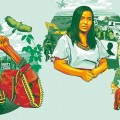
 Almost 2,000 land and environmental defenders were killed between 2012 and 2022 for simply standing up to protect our planet and us all from the accelerating climate crisis.
Almost 2,000 land and environmental defenders were killed between 2012 and 2022 for simply standing up to protect our planet and us all from the accelerating climate crisis.
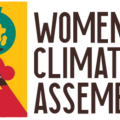 African women unite on the frontlines of the Climate Crisis
African women unite on the frontlines of the Climate Crisis
 UN warns over looming food crisis in Uganda
UN warns over looming food crisis in Uganda
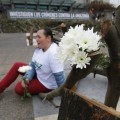 The Deadly Toll of Land and Environmental Activism
The Deadly Toll of Land and Environmental Activism
SPECIAL REPORTS AND PROJECTS
Top 10 agribusiness giants: corporate concentration in food & farming in 2025
Published
3 months agoon
August 28, 2025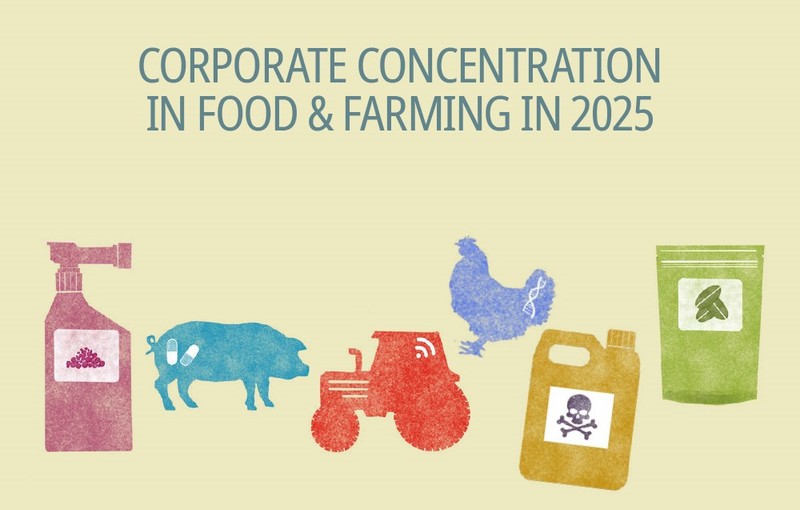

|
Ranking
|
Company (Headquarters)
|
Sales in 2023
(US$ millions)
|
% Global market share 19
|
|
1
|
Bayer (Germany)20
|
11,613
|
23
|
|
2
|
Corteva (US)21
|
9,472
|
19
|
|
3
|
Syngenta (China/Switzerland)22
|
4,751
|
10
|
|
4
|
BASF (Germany)23
|
2,122
|
4
|
|
Total top 4
|
27,958
|
56
|
|
|
5
|
Vilmorin & Cie (Groupe Limagrain) (France)24
|
1,984
|
4
|
|
6
|
KWS (Germany)25
|
1,815
|
4
|
|
7
|
DLF Seeds (Denmark)26
|
838
|
2
|
|
8
|
Sakata Seeds (Japan)27
|
649
|
1
|
|
9
|
Kaneko Seeds (Japan)28
|
451
|
0.9
|
|
Total top 9
|
33,695
|
67
|
|
|
Total world market29
|
50,000
|
100%
|
|
Ranking
|
Company (Headquarters)
|
Sales in 2023
(US$ millions)
|
% Global market share
|
|
1
|
Syngenta (China/Switzerland)43
|
20,066
|
25
|
|
2
|
Bayer (Germany)44
|
11,860
|
15
|
|
3
|
BASF (Germany)45
|
8,793
|
11
|
|
4
|
Corteva (US)46
|
7,754
|
10
|
|
Total top 4
|
48,472
|
61
|
|
|
5
|
UPL (India)47
|
5,925
|
8
|
|
6
|
FMC (Germany)48
|
4,487
|
6
|
|
7
|
Sumitomo (Japan)49
|
3,824
|
5
|
|
8
|
Nufarm (Australia)50
|
2,056
|
3
|
|
9
|
Rainbow Agro (China)51
|
1,623
|
2
|
|
10
|
Jiangsu Yangnong Chemical Co., Ltd. (China)52
|
1,595
|
2
|
|
Total top 10
|
67,982
|
86
|
|
|
Total world market53
|
79,000
|
100
|
|
Ranking
|
Company (Headquarters)
|
Sales in 2023
(US$ millions)
|
% Global market share
|
|
1
|
Nutrien (Canada)72
|
15,673
|
8
|
|
2
|
The Mosaic Company (US)73
|
12,782
|
7
|
|
3
|
Yara (Norway)74
|
11,688
|
6
|
|
4
|
CF Industries Holdings, Inc, (US)75
|
6,631
|
3
|
|
Total top 4
|
46,774
|
24
|
|
|
5
|
ICL Group Ltd. (Israel)76
|
6,294
|
3
|
|
6
|
OCP (Morocco)77
|
5,967
|
3
|
|
7
|
PhosAgro (Russia)78
|
4,989
|
3
|
|
8
|
MCC EuroChem Joint Stock Company (EuroChem) (Switzerland/Russia)79
|
4,298
|
2
|
|
9
|
OCI (Netherlands)80
|
4,188
|
2
|
|
10
|
Uralkali (Russia)81
|
3,497
|
2
|
|
Total top 10
|
76,007
|
39
|
|
|
Total world market82
|
196,000
|
100
|
|
Ranking
|
Company (Headquarters)
|
Sales in 2023
(US$ millions)
|
% Global market share
|
|
1
|
Deere and Co. (US)89
|
26,790
|
15
|
|
2
|
CNH Industrial (UK/Netherlands)90
|
18,148
|
10
|
|
4
|
AGCO (US)91
|
14,412
|
8
|
|
3
|
Kubota (Japan)92
|
14,233
|
8
|
|
Total top 4
|
73,583
|
43
|
|
|
5
|
CLAAS (Germany)93
|
6,561
|
4
|
|
6
|
Mahindra and Mahindra (India)94
|
3,156
|
2
|
|
7
|
SDF Group (Italy)95
|
2,197
|
1
|
|
8
|
Kuhn Group (Switzerland)96
|
1,583
|
0.9
|
|
9
|
YTO Group (China)97
|
1,493
|
0.9
|
|
10
|
Iseki Group (Japan)98
|
1,057
|
0.6
|
|
Total top 10
|
89,629
|
52
|
|
|
Total world market99
|
173,000
|
100
|
|
Ranking
|
Company (Headquarters)
|
Sales in 2023
(US$ millions)
|
% Global market share
|
|
1
|
Zoetis (US)115
|
8,544
|
18
|
|
2
|
Merck & Co (MSD) (US)116
|
5,625
|
12
|
|
3
|
Boehringer Ingelheim Animal Health (Germany)117
|
5,100
|
11
|
|
4
|
Elanco (US)118
|
4,417
|
9
|
|
Total top 4
|
23,686
|
49
|
|
|
5
|
Idexx Laboratories (US)119
|
3,474
|
7
|
|
6
|
Ceva Santé Animale (France)120
|
1,752
|
4
|
|
7
|
Virbac (France)121
|
1,348
|
3
|
|
8
|
Phibro Animal Health Corporation (US)122
|
978
|
2
|
|
9
|
Dechra (UK)123
|
917
|
2
|
|
10
|
Vetoquinol (France)124
|
572
|
1
|
|
Total top 10
|
32,727
|
68
|
|
|
Total world market125
|
48,000
|
100
|
 The genetic material used in the industrial production of meat, dairy and aquaculture is supplied by a small number of relatively unknown companies that are mostly privately owned. As detailed financial data is not publicly available for most of these companies, it is difficult to determine companies’ market shares and even the value of the global market. However, it was possible to arrive at some estimates for chicken, which tops global meat production (narrowly exceeding pigs).126
The genetic material used in the industrial production of meat, dairy and aquaculture is supplied by a small number of relatively unknown companies that are mostly privately owned. As detailed financial data is not publicly available for most of these companies, it is difficult to determine companies’ market shares and even the value of the global market. However, it was possible to arrive at some estimates for chicken, which tops global meat production (narrowly exceeding pigs).126Related posts:
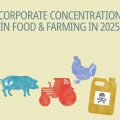
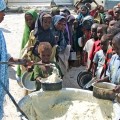 CORPORATE AGRIBUSINESS GIANTS SWIM IN WEALTH AS MORE POOR PEOPLE GO HUNGRY AMID THE BITING COVID PANDEMIC.
CORPORATE AGRIBUSINESS GIANTS SWIM IN WEALTH AS MORE POOR PEOPLE GO HUNGRY AMID THE BITING COVID PANDEMIC.
 A corporate cartel fertilises food inflation
A corporate cartel fertilises food inflation
 The United Nations Food Systems Summit is a corporate food summit —not a “people’s” food summit
The United Nations Food Systems Summit is a corporate food summit —not a “people’s” food summit
 Food inflation: The math doesn’t add up without factoring in corporate power
Food inflation: The math doesn’t add up without factoring in corporate power

Happening shortly! Kenya’s upcoming court ruling on the Seed Law could have a significant impact on farmers’ rights, food sovereignty, and the country’s food system.

Joint Statement Response by Advisers of PAPs to the DRS Follow-Up Report on the Uganda KIIDP-2 Case

Activists storm TotalEnergies’ office ahead of G20 Summit, demand end to fossil fuel expansion in Africa

Environmentalists reject TFFF, warning it will deepen forest destruction.

Seed Boot Camp: A struggle to conserve local and indigenous seeds from extinction.

“Vacant Land” Narrative Fuels Dispossession and Ecological Crisis in Africa – New report.

Report reveals ongoing Human Rights Abuses and environmental destruction by the Chinese oil company CNOOC

Activists storm TotalEnergies’ office ahead of G20 Summit, demand end to fossil fuel expansion in Africa

Innovative Finance from Canada projects positive impact on local communities.
Over 5000 Indigenous Communities evicted in Kiryandongo District
Petition To Land Inquiry Commission Over Human Rights In Kiryandongo District
Invisible victims of Uganda Land Grabs
Resource Center
- REPARATORY AND CLIMATE JUSTICE MUST BE AT THE CORE OF COP30, SAY GLOBAL LEADERS AND MOVEMENTS
- LAND GRABS AT GUNPOINT REPORT IN KIRYANDONGO DISTRICT
- THOSE OIL LIARS! THEY DESTROYED MY BUSINESS!
- RESEARCH BRIEF -TOURISM POTENTIAL OF GREATER MASAKA -MARCH 2025
- The Mouila Declaration of the Informal Alliance against the Expansion of Industrial Monocultures
- FORCED LAND EVICTIONS IN UGANDA TRENDS RIGHTS OF DEFENDERS IMPACT AND CALL FOR ACTION
- 12 KEY DEMANDS FROM CSOS TO WORLD LEADERS AT THE OPENING OF COP16 IN SAUDI ARABIA
- PRESENDIANTIAL DIRECTIVE BANNING ALL LAND EVICTIONS IN UGANDA
Legal Framework
READ BY CATEGORY
Newsletter
Trending
-

 MEDIA FOR CHANGE NETWORK2 weeks ago
MEDIA FOR CHANGE NETWORK2 weeks ago“Vacant Land” Narrative Fuels Dispossession and Ecological Crisis in Africa – New report.
-

 MEDIA FOR CHANGE NETWORK6 days ago
MEDIA FOR CHANGE NETWORK6 days agoActivists storm TotalEnergies’ office ahead of G20 Summit, demand end to fossil fuel expansion in Africa
-

 MEDIA FOR CHANGE NETWORK1 week ago
MEDIA FOR CHANGE NETWORK1 week agoEnvironmentalists reject TFFF, warning it will deepen forest destruction.
-

 MEDIA FOR CHANGE NETWORK2 weeks ago
MEDIA FOR CHANGE NETWORK2 weeks agoUganda’s Army is on the spot for forcibly grabbing land for families in Pangero Chiefdom in Nebbi district.
-

 NGO WORK2 weeks ago
NGO WORK2 weeks agoAfrica’s Land Is Not Empty: New Report Debunks the Myth of “Unused Land” and Calls for a Just Future for the Continent’s Farmland
-

 NGO WORK2 weeks ago
NGO WORK2 weeks agoClimate wash: The World Bank’s Fresh Offensive on Land Rights
-

 MEDIA FOR CHANGE NETWORK3 hours ago
MEDIA FOR CHANGE NETWORK3 hours agoHappening shortly! Kenya’s upcoming court ruling on the Seed Law could have a significant impact on farmers’ rights, food sovereignty, and the country’s food system.
-

 STATEMENTS2 days ago
STATEMENTS2 days agoJoint Statement Response by Advisers of PAPs to the DRS Follow-Up Report on the Uganda KIIDP-2 Case









